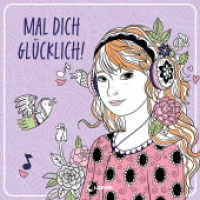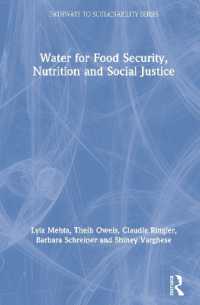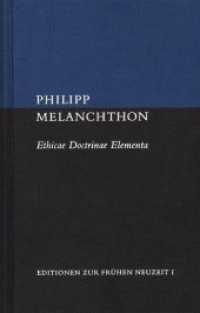Full Description
Sexual Diversity: Being Human through Understanding and Acceptance is an in-depth exploration of the vast diversity of sexual and erotic orientations, including heterosexual, lesbian, gay, bisexual, and queer identities, as well as erotic diversity from vanilla to kink and everything in between. The book looks at the heteronormative 'norms' prescribed by society and how these may be problematic for all populations, including heterosexual people. As part of diversity, the book offers a frame of thinking based on intersectionality.
The work is a reference point to sexual and erotic diversities, written in plain English and in a conversational style. It attempts to offer a definition of the different identity terms that can be confusing, while acknowledging that language is fluid and changeable. This helps us to be more aware of the language we use and how we can stay as adaptable and fluid as eroticism can be. The content embraces inclusivity and helps us to learn to accept differences and to be more knowledgeable in the wide range of ways to live. It enables us to challenge our pre-conceived ideas and assumptions regarding sexuality and eroticism, and to continue learning and staying curious about diverse communities, cultures, and subcultures in the sexuality and erotic arenas. The concepts discussed are brought to life with stories from the consulting room and the world outside.
This is a gem of a book that not only teaches us so much but also offers us opportunities for self-reflection. It is an absolute must-read for practising psychotherapists, counsellors, and psychoanalysts, as well as other professionals in the social care environment and every human interested in learning more about the wide variety of sexuality and eroticism in the world.
Contents
About the author
1 Introduction
1.1. Why this book?
1.2. A note on language and learning
1.3. My positionality
1.4. The "norms"
1.5. Patriarchy: A note on masculinity
2 An overview of sexuality
2.1. The brief history of sexuality
2.2. Exploring our biases
2.3. The beginning
2.4. Sexuality: Nature or nurture?
2.5. Sexuality: Affirmation and exploration
2.6. Sexual diversity: The biopsychosocial model
2.7. Sexuality, romance, and eroticism
2.8. The definition of sex-positivity
3 The diversity of sexual orientations
3.1. What is a sexual orientation?
3.2. Sexual expressions
3.3. Sexual orientation diversities
3.4. Minority stress
4 The diversity of erotic orientations
4.1. Don't yuck someone's yum
4.2. The erotic palette
4.3. Erotic orientations
4.4. The five cornerstones of eroticism
4.5. The ten types of erotic boosters
4.6. The somatic erotic pathways
4.7. The erotic equation
4.8. The meaning of sexual urges
4.9. Erotic fantasies
4.10. Vanilla, kink, and fetish
4.11. A note on erotocentrism
5 The diversity of sexual behaviours
5.1. Sexual behaviours
5.2. The six principles of sexual health
5.3. Exploring client's erotic mind
5.4. Motivation for sex
5.5. Sexual satisfaction
5.6. A note on problematic sexual behaviours
Conclusion
References
Further reading: Books I recommend
Index








